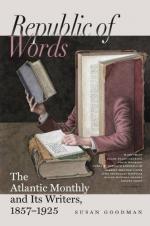But never buy a gun, and least of all a rifle, without trying it; and do not be satisfied with a trial in a shop or shooting gallery, but take it into the field; and if you distrust yourself, get some one in whom you have confidence to try it for you. Choose a perfectly calm day. Have a rest prepared on which not only the gun may be laid, but a support may also be had for the elbows, the shooter being seated. By this means, and with the aid of globe- and peek-sights, (which should always be used in trying a gun,) it may as certainly be held in the same position at every shot as if it were clamped in a machine. For your target take a sheet of cartridge-paper and draw on it a circle of a foot, and, inside of that, another of four inches in diameter. Paint the space between the rings black, and you will then have a black ring four inches wide surrounding a white four-inch bull’s-eye, against which your globe-sight will be much more distinctly seen than if it were black. Place the target so that when shooting you may have the sun on your back. On a very bright day, brown paper is better for a target than white. Begin shooting at one hundred yards and fire ten shots, with an exact aim at the bull’s-eye, wiping out the gun after each shot. Do not look to see where you hit, till you have fired your string of ten shots; for, if you do, you will be tempted to alter your aim and make allowance for the variation, whereas your object now is not to hit the bull’s-eye, but to prove the shooting of the gun; and if you find, when you get through, that




